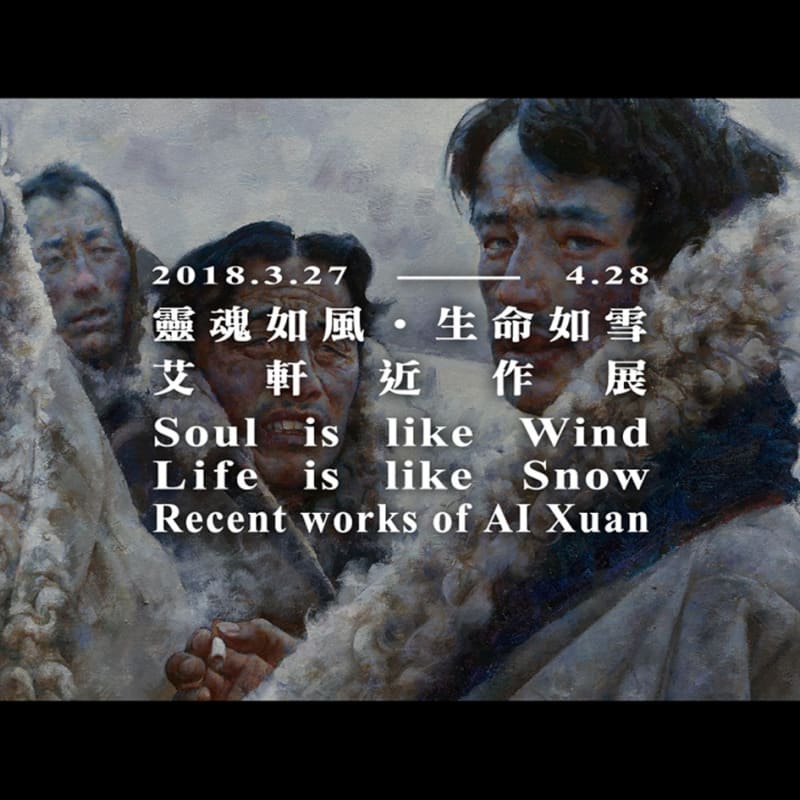Kwai Fung Hin Art Gallery proudly presented the solo exhibition of works by Chinese painter, Ai Xuan (b. 1947, Zhejiang Province, China): Soul is like wind; life is like snow: Recent Works of Ai Xuan. Ai Xuan is regarded as the founder and a pioneer of the 'School of Chinese Realism', and is known for his nostalgic depictions of the Tibetan people, reflecting the impact of his personal travels to the region, which began whilst he was a painter for the People's Liberation Army. The exhibition will showcase the artist's latest works across various mediums, including three recently created oil paintings, seventeen ink works and eight drawings.
The son of famous modern Chinese poet Ai Qing and the half-brother of Ai Weiwei, Ai Xuan studied painting at a middle school affiliated with the China Central Academy of Fine Arts during a turbulent time in China's history. After the Cultural Revolution, he joined the People's Liberation Army, and was tasked with painting the Red Army and works of political propaganda. He was sent to Sichuan, which is the time that he had his first encounter with Tibet.
In 1984, Ai Xuan left the military and entered the Beijing Fine Arts Academy, remaining committed to realism amid the booming avant-garde movement during the 1980s. In 1987, Ai Xuan spent a year in America as a visiting scholar at Oklahoma University. Whilst in America, he had the opportunity to meet American Realist painter, Andrew Wyeth, whose style had greatly inspired and influenced him. He also participated in the "1st Chinese Oil Painting Exhibition" at the Harkness House in New York, and held his first solo exhibition at the Hefner Galleries.
Ai Xuan began his career with oil paintings during the 1970s, and has been exploring new territory by also working with ink since 2008. His expansion into ink painting traces back to the roots of the artist's culture, and provides a medium for experimentation whilst maintaining his rigorous approach.
The Tibetan people have been the subject of Ai Xuan's work for decades; he is known for portraying young girls with bright but melancholy eyes. Ai Xuan has returned to the Tibetan region many times as part of his creative process, which is meticulous and lengthy. For each individual painting, the artist visits the region, taking photographs and compiling studies to inform his compositions on return to his studio in Beijing.
Ai Xuan's works are widely collected by important museums and art collectors, including the Metropolitan Museum of Art in New York, National Art Museum of China in Beijing, and the Fukuoka Asian Art Museum in Japan. In 2015, Ai Xuan was awarded "Chevalier Medal for Oriental Art" by the Belgian Federal Parliament for his contribution to the cultural exchange of the East and the West. In the same year, he was awarded "European Art Star" by the European Parliament.
"…The most distinctive feature of Ai Xuan's style is his expression of sentiments through pictures of landscapes. He painted Tibetan plateaus and lonely people, mainly to express his inner feelings. So, rather than saying that his works represent the Tibetan culture, it would be more accurate to say that his works are his personal monologues. As such, Ai Xuan’s shadow can be found in every one of his paintings. In quietude and meditation, inexplicable loneliness is dispersed across the images of his models and the atmosphere of the painting…"
- Art Critic SHAO Dazhen, “A Rising Star – the Painter, Ai Xuan”, The Art of Yan-Huang, 1992
Soul is like Wind; Life is like snow - Recent Works of Ai Xuan
Exhibition period
27 March – 28 April 2018
Location
Kwai Fung Hin Art Gallery, G/F, 20 Ice House Street, Central, Hong Kong

